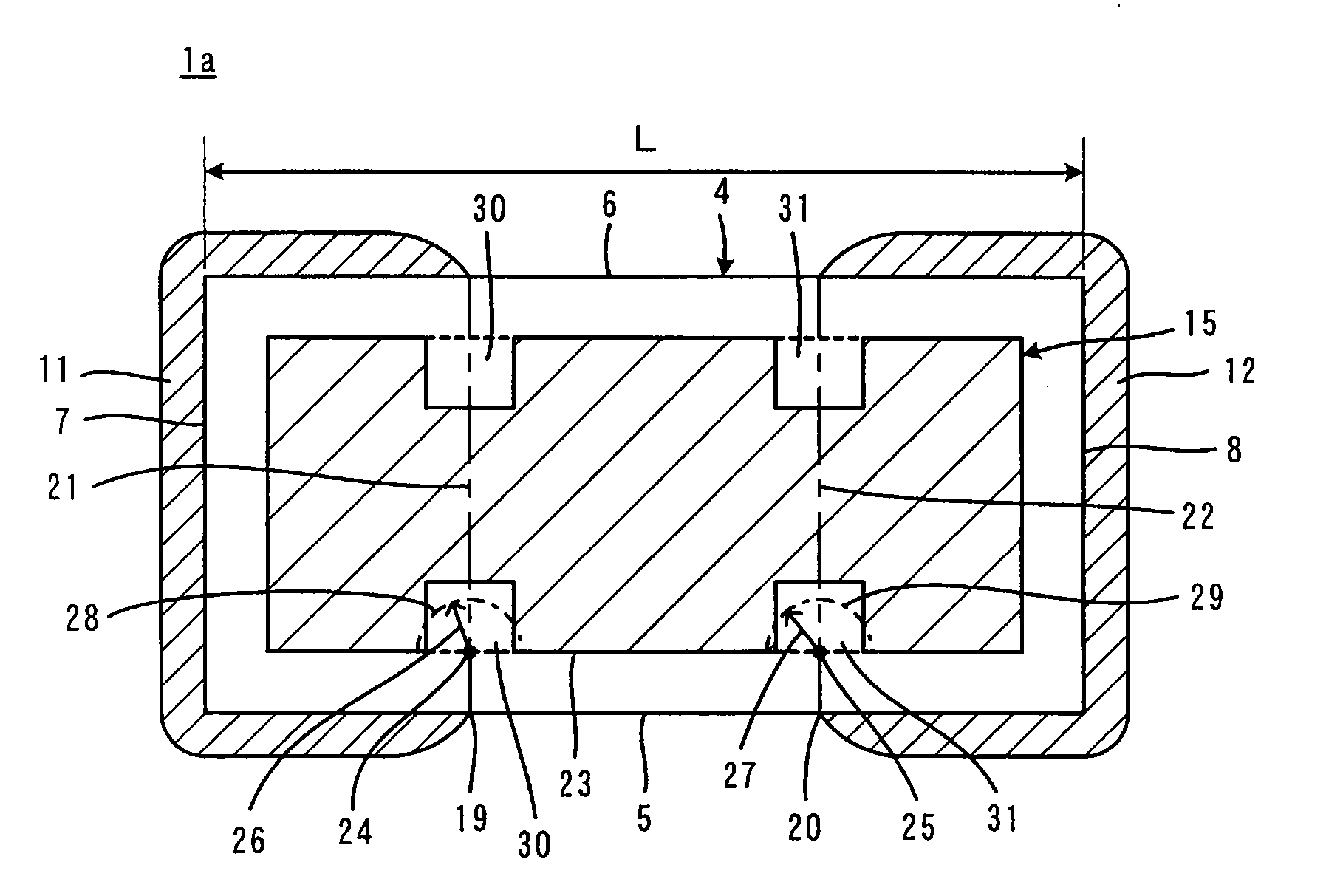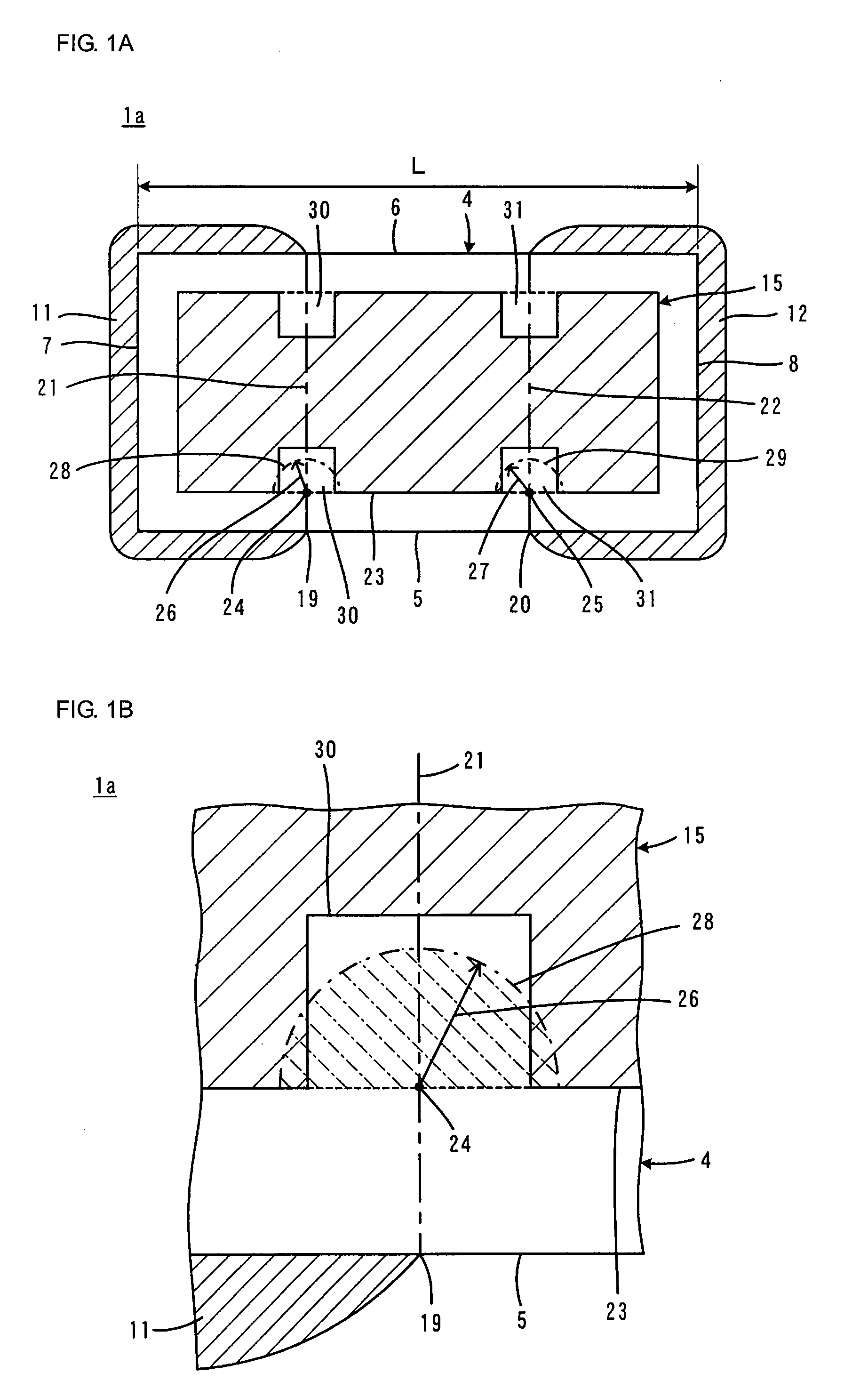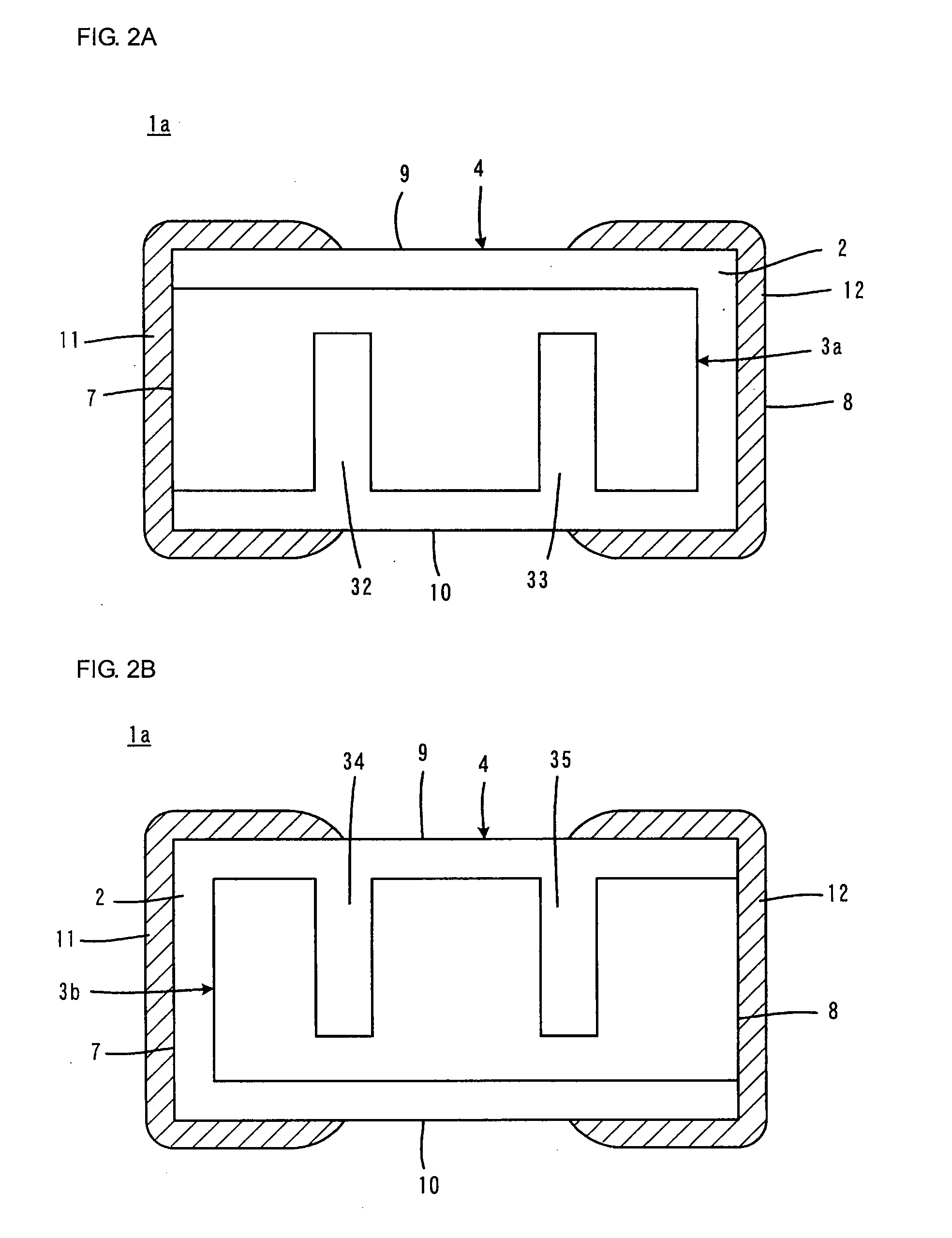Multilayer ceramic capacitor
a ceramic capacitor and multi-layer technology, applied in the direction of fixed capacitors, stacked capacitors, fixed capacitor details, etc., can solve the problems of difficult to achieve both a high dielectric constant, and the degree of design freedom is limited, so as to suppress the force that causes the substrate, suppress the distortion in the low-activity region, and suppress the effect of “squeal”
- Summary
- Abstract
- Description
- Claims
- Application Information
AI Technical Summary
Benefits of technology
Problems solved by technology
Method used
Image
Examples
first embodiment
[0068]FIGS. 1A, 1B, 2A and 2B illustrate the present invention. As in the case of FIG. 15, FIG. 1A shows the active part 15 instead of internal electrodes. A multilayer ceramic capacitor 1a illustrated in FIG. 1A is to be mounted on a substrate with its lower side being adjacent to the substrate. FIG. 1B is an enlarged view of part of FIG. 1A. FIG. 2A and FIG. 2B are plan views illustrating an internal electrode pattern in the multilayer ceramic capacitor 1a of FIG. 1A. In FIGS. 1A and 1B and FIGS. 2A and 2B, elements equivalent to those illustrated in FIG. 14 and FIG. 15 are given the same reference numerals and redundant description is omitted. Although not illustrated in FIG. 14, first and second side surfaces 9 and 10 are illustrated in FIG. 2.
[0069]A characteristic configuration of the multilayer ceramic capacitor 1a according to the first embodiment will now be described.
[0070]Reference character L denotes the distance between the first and second end surfaces 7 and 8 in the l...
second embodiment
[0077]FIGS. 3A and 3B illustrate a multilayer ceramic capacitor 1b according to the present invention. FIG. 3 corresponds to FIG. 2 and shows an exemplary modification of the internal electrode pattern. In FIG. 3, elements equivalent to those illustrated in FIG. 2 are given the same reference numerals and redundant description is omitted.
[0078]As illustrated in FIG. 3A, the notches 32 and 33 formed in the internal electrode 3a have openings on different sides of the internal electrode 3a. Likewise, as illustrated in FIG. 3B, the notches 34 and 35 formed in the internal electrode 3b have openings on different sides of the internal electrode 3b.
[0079]The internal electrode patterns illustrated in both FIG. 2 and FIG. 3 are formed such that the internal electrodes 3a and 3b do not face each other in the low-activity regions 30 and 31, that is, such that the facing area of the internal electrodes 3a and 3b in the low-activity regions 30 and 31 is zero. However, this facing area does no...
third embodiment
[0081]FIG. 4 illustrate a multilayer ceramic capacitor 1c according to the present invention. FIG. 4 corresponds to FIG. 2 and shows another exemplary modification of the internal electrode pattern. In FIG. 4, elements equivalent to those illustrated in FIG. 2 are given the same reference numerals and redundant description is omitted.
[0082]As illustrated in FIG. 4A, notches 36 and 37 for providing the low-activity region 31 are formed in the internal electrode 3a with their openings oriented in directions opposite each other. A narrow portion 38 is left between the notches 36 and 37. Likewise, as illustrated in FIG. 4B, notches 39 and 40 for providing the low-activity region 30 are formed in the internal electrode 3b with their openings oriented in directions opposite each other. A narrow portion 41 is left between the notches 39 and 40. The width of both the narrow portions 41 and 38 is less than or equal to one fifth that of the other portions of the internal electrodes 3a and 3b....
PUM
| Property | Measurement | Unit |
|---|---|---|
| dielectric constant | aaaaa | aaaaa |
| thickness | aaaaa | aaaaa |
| thickness | aaaaa | aaaaa |
Abstract
Description
Claims
Application Information
 Login to View More
Login to View More - R&D
- Intellectual Property
- Life Sciences
- Materials
- Tech Scout
- Unparalleled Data Quality
- Higher Quality Content
- 60% Fewer Hallucinations
Browse by: Latest US Patents, China's latest patents, Technical Efficacy Thesaurus, Application Domain, Technology Topic, Popular Technical Reports.
© 2025 PatSnap. All rights reserved.Legal|Privacy policy|Modern Slavery Act Transparency Statement|Sitemap|About US| Contact US: help@patsnap.com



